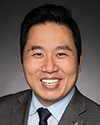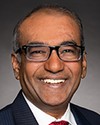Yes.
Evidence of meeting #90 for Public Accounts in the 42nd Parliament, 1st session. (The original version is on Parliament’s site, as are the minutes.) The winning word was services.
A video is available from Parliament.
Evidence of meeting #90 for Public Accounts in the 42nd Parliament, 1st session. (The original version is on Parliament’s site, as are the minutes.) The winning word was services.
A video is available from Parliament.
Deputy Minister, Department of Indian Affairs and Northern Development
Liberal

Shaun Chen Liberal Scarborough North, ON
—in the delivery of service. There needs to be a sense of cultural appropriateness and to ensure that indigenous ways of knowing are incorporated in the services provided to members of that community. Can you talk about the importance of that, and how that thinking has been incorporated in your goal, ultimately, of ensuring that more first nations and Inuit children are provided with these services?
Deputy Minister, Department of Indian Affairs and Northern Development
Do you want to maybe elaborate a bit on COHI?
Associate Deputy Minister, Department of Indian Affairs and Northern Development
First, budget 2017 provides an additional investment of $45 million, over five years, for this program. Right after the announcement, we engaged with first nations and Inuit partners across the country to determine how this funding would be allocated. This year, for the first time, we have increased the budget of all 237 communities that were receiving the program. We did so because they had been receiving the same amount for a number of years. This budget allowed an increase in the capacity of existing sites. Then we are starting to create new sites in new communities, so at the end of the year there will probably be 140 new locations where this program is available. We did that with the input of our first nations and Inuit partners in each and every region.
In the non-insured health benefits program, which is more a fee-for-service model, we are also paying attention and working with the Assembly of First Nations, for example, to make sure that the providers understand that the client groups are culturally sensitive. Fortunately in both programs we have providers who are indigenous themselves and who understand this, but we have to partner with others to train and provide the information. A lot of the workers that we already have in the department are indigenous. Therefore, there are many fronts by which we will ensure cultural safety around this program.
As I mentioned before in another response, what is really important is also to find a way to have local staff tasked with managing these programs at the local level and to make these work in their context, by creating the trust with the parents and the child that these services will be good for them. I think we would all agree that going to a dentist is not your first choice in the day, so we need local workers to make them feel comfortable that this is good for them, that it's useful, and that it will help over time to prevent problems.
We have to do it in partnership; we cannot do it from outside. This is why these programs have to be grounded in the community. We need to stabilize which provider goes into the community to make sure they develop a relationship and a continuity of services with the family and the child. It's very important.
Liberal

Shaun Chen Liberal Scarborough North, ON
Absolutely.
The Auditor General said with respect to the $5-million investment in the children's oral health initiative that the department's data showed that fewer children were enrolled and fewer services were provided. I think it's great that you are looking forward to the additional investment, that you're looking to reach out to more communities, and that you're working with indigenous communities to ensure that these services are culturally relevant and that they are involved in the process. As you say, you have providers who are indeed indigenous themselves. However, why should I be convinced that with more money and with what you're doing, you are going to have better outcomes? As the Auditor General pointed out today, there are fewer children enrolled and fewer services were provided with that $5-million investment.
Conservative

The Chair Conservative Kevin Sorenson
Thank you. Unfortunately we're going to have to get the answer a little later because we're way over the time.
We'll go to Monsieur Deltell.
Conservative

Gérard Deltell Conservative Louis-Saint-Laurent, QC
I want to get back to the point that I addressed a few minutes ago about the difference between indigenous communities near downtown or urban centres and those up north. I thank you for your suggested “concrete plan” and “strategic approach”. Those were the words you used in your introductory remarks. I think you should focus on that difference and put the emphasis up north. Those people are far away from having access to dental necessities. If there is going to be a new approach, it should be concentrated and focused on those communities. This is my personal observation. I'm sure you will make good of that.
I would like to talk about the broader vision for First Nations health care and dental care.
Mr. Tremblay, earlier, you said that, when you talk about asthma problems, you have to talk about housing, and if you talk about dental problems, you have to talk about nutrition.
My question is for you first, Mr. Ferguson.
At the time of your analysis, and to the extent possible, did you consider the overall picture of First Nations communities in terms of diet compared to non-indigenous people? As we all know, a poor diet, which leaves too much room for sugar, leads to bad teeth.
Auditor General of Canada, Office of the Auditor General
Thank you for the question.
This is another indication, just like the geographical barriers. We have identified five factors, including limited access to nutritious and affordable food. Of course, there are geographical barriers, but there are other factors, such as the high smoking rate and the level of education. A number of factors can affect the health of those populations, and access to nutrients is one of those factors.
Conservative

Gérard Deltell Conservative Louis-Saint-Laurent, QC
That brings us to a very sensitive issue. We can encourage people to eat in ways that are consistent with healthy living, but we cannot force them to do so. Besides, we do not have to do it either.
My question is for Mr. Tremblay.
When food containers are sent from the south to the north, are their contents inspected?
Deputy Minister, Department of Indian Affairs and Northern Development
Not to my knowledge.
Conservative

Gérard Deltell Conservative Louis-Saint-Laurent, QC
In your opinion, should we do that? I ask the question very openly. According to our party's principles, we must let people make their own choices; it's not up to the government to tell them what to do. At the same time, we should perhaps encourage them to have healthy lifestyle habits.
Could this view be considered, improved and even become an objective?
Deputy Minister, Department of Indian Affairs and Northern Development
I think prevention work is still the best thing to do. We must focus on education and prevention. As you know, Minister Bennett's department has nutrition programs for northern communities to ensure that healthy, nutritious food is distributed in the north. The associated costs are also a major issue.
As for deciding what should be sent to these communities—
Conservative

Gérard Deltell Conservative Louis-Saint-Laurent, QC
That's fine. Honestly, I share your point of view. The government's role is not to tell people what to do or to force them to do anything, but it can still give them information.
Deputy Minister, Department of Indian Affairs and Northern Development
That reinforces what we were saying earlier. It's really important to work with the communities. That's what they have to realize. There is also the fact that indigenous people have had access to traditional food for years, which is no longer as accessible today.
Conservative

Gérard Deltell Conservative Louis-Saint-Laurent, QC
Exactly, let's talk about that.
Have you studied the traditional food in those communities? If so, were the results positive or negative in terms of dental problems?
Deputy Minister, Department of Indian Affairs and Northern Development
I have not done any studies on that, and I don't think the department has done any either. However, university research groups, including from the University of Montreal and Laval University, in Quebec, have looked at those issues.
Conservative

Gérard Deltell Conservative Louis-Saint-Laurent, QC
In my opinion, giving First Nations more opportunities to preserve, maintain, develop and promote their traditional diet might be something to think about. The feeling of belonging would then be 10 times higher.
Deputy Minister, Department of Indian Affairs and Northern Development
Conservative

Gérard Deltell Conservative Louis-Saint-Laurent, QC
As you said so well, it's not up to us in the south to tell those people what to do. Since time immemorial, those communities have been much better placed than us to know what is good for them and what is not.
Deputy Minister, Department of Indian Affairs and Northern Development
Yes, absolutely.
Conservative

The Chair Conservative Kevin Sorenson
Thank you, Mr. Deltell.
We'll now move to Mr. Arya, please, for five minutes. We're into our second round.
Liberal

Chandra Arya Liberal Nepean, ON
Mr. Tremblay, I would like to continue the questions that were asked by my colleague Shaun. The Auditor General's report mentioned that with the $5-million initiative, fewer children were enrolled and fewer services were provided compared to the previous years. Budget 2017 has now increased the amount available, but what is the point of increasing the amount when you can't use the existing money that was already provided?
Associate Deputy Minister, Department of Indian Affairs and Northern Development
I think the children's oral health initiative was introduced in 2005, with $5 million. We were in 2017-18 when the Office of the Auditor General made the audit, and the budget was the same. Over time, the capacity of communities to deliver the service—this funding is going toward the communities mainly—with the same budget is limited. Somehow the impetus for increasing the resources available is coming from the fact that 15 years at the same level is not—
Liberal

Chandra Arya Liberal Nepean, ON
Sorry, I don't understand. Yes, the budget was at the same level, but the data shows that fewer children were accessing it.
Deputy Minister, Department of Indian Affairs and Northern Development
No, but that's the point. If you look at it over 10 years, you see, of course, that the costs have increased, but not the budget. One of the hypotheses, and that's why we're going to need to have more information about this, is that if you provide the same amount of money for the program, you basically have cut the services, because you don't necessarily follow the CPI.